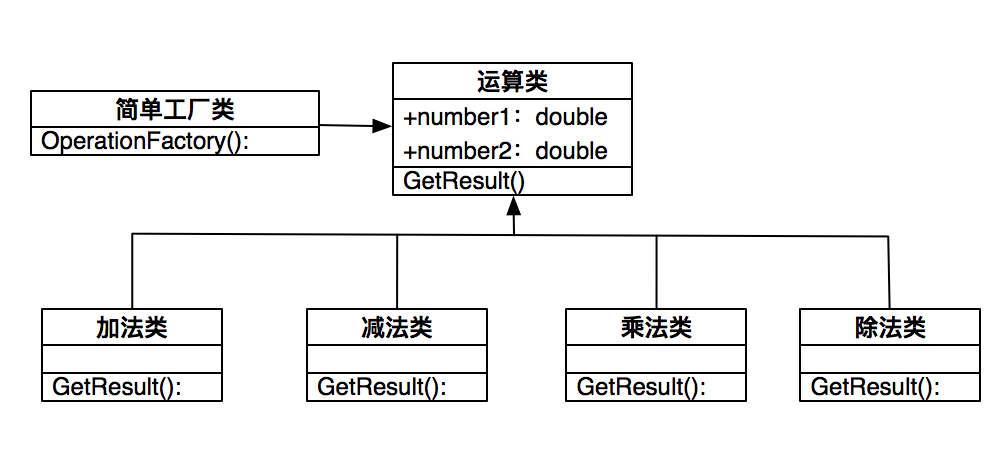本文實例講述了python設計模式之簡單工廠模式。分享給大家供大家參考,具體如下:
簡單工廠模式(simple factory pattern):是通過專門定義一個類來負責創建其他類的實例,被創建的實例通常都具有共同的父類.
下面使用簡單工廠模式實現一個簡單的四則運算
|
1
2
3
4
5
6
7
8
9
10
11
12
13
14
15
16
17
18
19
20
21
22
23
24
25
26
27
28
29
30
31
32
33
34
35
36
37
38
39
40
41
42
43
44
45
46
47
48
49
50
51
52
53
54
55
56
57
58
59
60
61
62
63
64
65
66
|
#!/usr/bin/env python# -*- coding:utf-8 -*-__author__ = 'andy''''大話設計模式用任意一種面向對象語言實現一個計算器控制臺程序。要求輸入兩個數和運算符號,得到結果設計模式——簡單工廠模式簡單工廠模式(simple factory pattern):是通過專門定義一個類來負責創建其他類的實例,被創建的實例通常都具有共同的父類。'''class operation(object): ''' 四則運算的父類,接收用戶輸入的數值 ''' def __init__(self, number1=0, number2=0): self.num1 = number1 self.num2 = number2 def getresult(self): pass pass#加法運算類class operationadd(operation): def getresult(self): return self.num1 + self.num2#減法運算類class operationsub(operation): def getresult(self): return self.num1 - self.num2#乘法運算類class operationmul(operation): def getresult(self): return self.num1 * self.num2#除法運算類class operationdiv(operation): def getresult(self): if self.num2 == 0: return '除數不能為0 ' return 1.0*self.num1 / self.num2#其他操作符類class operationundef(operation): def getresult(self): return '操作符錯誤'#簡單工廠類class operationfactory(object): def choose_oper(self,ch): if ch == '+': return operationadd() elif ch == '-': return operationsub() elif ch == '*': return operationmul() elif ch == '/': return operationdiv() else: return operationundef()if __name__ == "__main__": ch = '' while not ch == 'q': num1 = input('請輸入第一個數值: ') oper = str(raw_input('請輸入一個四則運算符: ')) num2 = input('請輸入第二個數值: ') # operation(num1,num2) of = operationfactory() oper_obj = of.choose_oper(oper) oper_obj.num1 = num1 oper_obj.num2 = num2 print '運算結果為: ',oper_obj.getresult() |
運行結果:
請輸入第一個數值: 51
請輸入一個四則運算符: -
請輸入第二個數值: 15
運算結果為: 36
這幾個類的結構圖如下:

專門定義一個operation類作為父類,加減乘除運算類繼承operation類,operationfactory類用來決定什么時候創建對應的類
希望本文所述對大家python程序設計有所幫助。
原文鏈接:https://www.cnblogs.com/onepiece-andy/p/python-simple-factory-pattern.html










